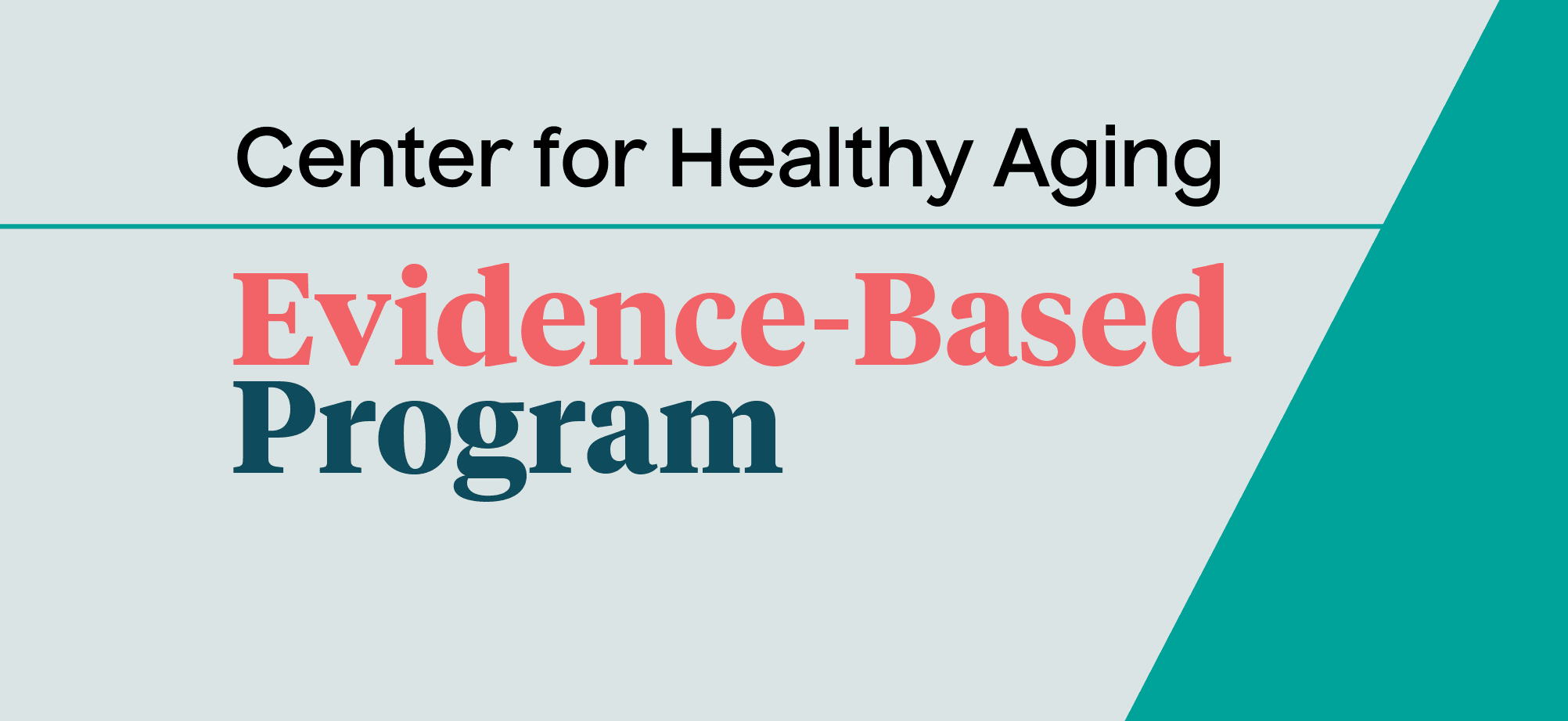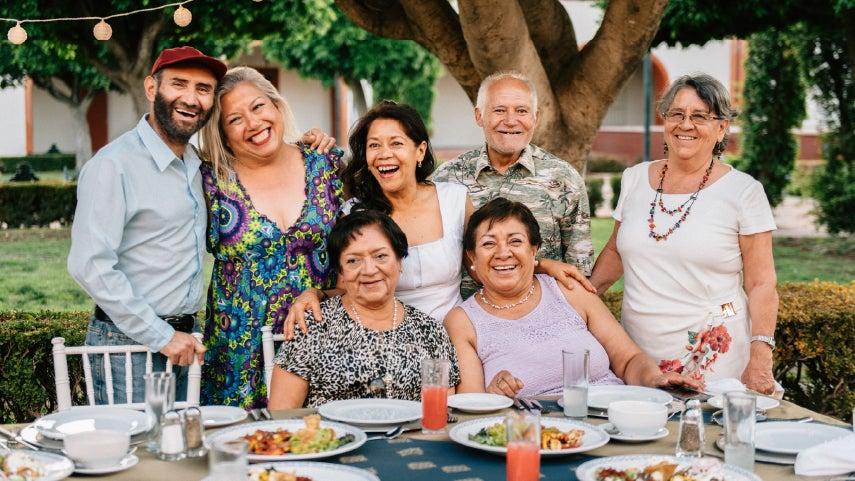Tips for Recruiting and Supporting Volunteers as Evidence-Based Program Leaders
9 min read

The generosity of volunteers plays a large role in helping organizations serve their community. Volunteers can contribute their talents, skills, and experiences, as well as their exceptional passion and dedication to the community.
And volunteers are vital to the success of many programs. According to the Administration for Community Living (ACL), many of its services, including Older Americans Act (OAA) programs, depend on volunteers, especially at the local level. In fact, roughly 62.5 million hours were dedicated by volunteers in FY2019 to the OAA Title III programs related to nutrition and other supportive programs. These hours equal approximately $1.7 billion worth of labor and 56% of the total workforce of area agencies on aging.1
The same goes for the implementation of health-promotion evidence-based programs (EBPs). A survey conducted for the Capacity Building Workgroup, comprised of the current ACL Chronic Disease Self-Management Education (CDSME) and Falls Prevention grantees, revealed that 56% of the grantees use volunteers in some capacity, including as leaders and coaches for their EBPs.
Overcoming challenges to recruit and train volunteers
While volunteers can play significant roles in the promotion of EBPs, many community-based organizations (CBOs), including area agencies on aging, have faced challenges with recruitment and retention of volunteers as EBP leaders. CBOs often have limited funding and resources to meet the needs of communities. Many organizations struggle with high staff turnover, limited staff, and demanding workloads, which can result in cancellations of EBPs and other services. For example, training to be an EBP leader requires a fee, time commitment, and dedication. Leaders must attend training workshops and maintain active certification status.
Therefore, it is vital for CBOs to strategically invest their time and energy in recruitment and support of volunteers. Below are some tried and true tips to recruit and retain volunteers as EBP leaders. These best practices have been shared by the recent ACL CDSME and Falls Prevention grantees working tirelessly to promote and expand the implementation of health promotion EBPs.
Tip 1: Establish a volunteer committee and program within your organization
Volunteers should be supported as valuable professionals. Solicit several staff members within your organization to serve as committee members who can take on the responsibilities of volunteer recruitment and engagement. Divide the responsibilities so the committee is successful and sustainable. Meet regularly to maintain thorough communication among the committee members. Developing a formal operation guide for the committee may also help sustain the volunteer program in case the members change.
Tip 2: Define the volunteer position descriptions and requirements
The role of EBP leader requires not only time commitment, but also access to transportation and internet, and sometimes qualifications or degrees in specific fields. Clearly presenting roles, expectations, and requirements helps both the interested people and your organization find a good match. A volunteer position description should include job title, purpose, key responsibilities, location, length of appointment, time commitment, benefits, and available support.
Tip 3: Recruit strategically
Attracting people to your organization is the first important step. When recruiting, share with the public your organization’s goals, values, and mission. “They’ve contacted you because they may have found the shared value between them and your organization,” says Rolando Toledo, MPH, of Partners in Care Foundation in California.
Using multiple communication tools for advertising the volunteer opportunities can cast a wider net. Examples include:
- Word of mouth
- Referral from current volunteers
- Presenting and/or personally recruiting at health fairs, community events, and among workshop completers
- Creating a dedicated webpage within the organization’s website
- Posting on social media such as Facebook and LinkedIn
- Mass media (local television, radio, newspaper, billboards, etc.)
When creating flyers or brochures for distribution, make sure they are easy to understand and have a clear call to action. The information should include the position description and the appropriate contact information for the volunteer coordinator in your organization. When appropriate, gather contact information such as email addresses so that you can follow up with them later.
Partnering with local volunteer organizations such as AmeriCorps, AmeriCorps Seniors RSVP, United Way, or consultants, and using existing volunteer-soliciting services, may also expand your reach. For example, the Education Health and Research International Inc in Delaware partners with Volunteer DE 50+, a statewide program offered through Delaware Health & Social Services, to solicit volunteers to be trained as leaders its falls prevention programs.
Tip 4: Select the right candidates
Just like your employees, you will invest in your volunteers through training and support. In return, they will invest in your organization with their skills and time. They will represent your organization as EBP leaders. When reviewing their applications and conducting interviews, be thorough to find the best match.
“I meet every candidate in person to make sure we are on the same page. It takes time," says Sue Perry, PhD, of the New Mexico Diabetes Advisory Council. "Some may not be too responsive, which is already a good indicator. It’s better to have a handful of dedicated leaders than many less-dedicated leaders.”
During the interview, review the job description and requirements with the candidate to clarify any questions, barriers, or hesitations. If the candidates are not available at the time you need them, make sure to stay in touch and follow up later. There may be a better opportunity in the future.
Tip 5: Introduce volunteers to your organization
Once the volunteers have been selected, and before having them dive into the extensive EBP leader training, provide a thorough orientation to your organization. This gives the volunteers not only an understanding of their positions and roles within the organization, but also a sense of belonging. The orientation should include: a warm welcome; an overview of the organization, its programs, and volunteer expectations; and finalizing the required documentation if necessary.
Tip 6: Communicate and support
Developing positive relationships and trust with volunteers are key to empowering and retaining volunteers. When volunteers are facilitating workshops, make sure that the personnel from the volunteer committee support them personally through regular communication. Being a program facilitator can be challenging sometimes with difficult situations, demanding schedules, or any other reasons. Listening to them, brainstorming, and problem-solving together may help prevent volunteers from experiencing burnout.
“We solicit regular feedback via quarterly surveys and informal virtual meetings, and also read all feedback and follow through on anything we say will do,” says Megan Stadnisky of the Atlanta Regional Commission in Georgia.
Evaluating volunteers’ work by providing feedback, sharing updates, and communicating the impact and value of their work is also important. It is also crucial for the organization to hear from volunteers and respect their input: they are the “boots on the ground” and know the community well. “They can help to improve the organization’s service to its community.
At Sanford Health, “we involve them in decision-making,” says Shelly Clauson, empowering volunteers and acknowledging that their inputs matter.
Tip 7: Provide incentives including professional development opportunities
While receiving the EBP leader training and maintaining leader certifications are great professional development opportunities themselves, providing other learning opportunities and benefits may help retain volunteer commitment. For example, at Rhode Island Parent Information Network, leaders are provided with training on Diversity, Equity and Inclusion, and motivational interviewing topics, in addition to semi-annual leader meetings.
When appropriate and possible, providing incentives such as stipends may be helpful to volunteers. Another idea is to provide credits such as Continuing Education Units (CEUs). The incentives do not have to be monetary. Creative ideas such as “Official EBP Coach” shirts for trained leaders as the Atlanta Regional Commission provides to its volunteers may be also fun and help grow the sense of community and their important roles.
Tip 8: Recognize volunteer’s service and show sincere and timely appreciation
As we all know, a simple ‘thank you’ goes a long way. Recognizing volunteers' contributions and accomplishments should be a standard operation. However, it is very important that these recognitions are made timely, frequently, specifically, and personally.
For example, many organizations send personalized, hand-written ‘thank you’ cards promptly after a volunteer completes a workshop. Some send holiday cards, gift cards, or even gift baskets. Knowing volunteers personally may also help your organization select the most appreciated ways of recognition for those volunteers.
Organizations may also want to host events such as volunteer appreciation luncheons and dinners. The National Kidney Foundation of Michigan hosts a virtual annual holiday webinar to celebrate success over the year with all the EBP leaders statewide, including volunteers, who have led the programs in the same year.
Also, the organization should recognize volunteers publicly through internal newsletters, social media, and even through media coverage should the volunteers agree. Celebrating National Volunteer Week during the third week of April may be a great opportunity to show appreciation to volunteers for the time and energy they have dedicated to your organization and community. It is also a strategy to attract potential future volunteers.
CBOs who are considering or already rely on volunteers to deliver EBPs can improve recruitment and retention of volunteers by investing time and effort into making sure the volunteers are treated with respect as professionals. Developing a thorough volunteer program and process that includes extensive recruitment; thorough vetting and onboarding; ongoing support and recognition; and attractive benefits or incentives will help propel your organization’s program delivery capacity and infrastructure.
Empower your organization to recruit and retain the right volunteers
In a partnership with the Center for Aging and Disability Education and Research (CADER) at Boston University School of Social Work, NCOA is offering a discounted online course, Volunteer Engagement in the Aging Network. The 2.5 hour course gives an introduction to volunteer management and covers how to:
- Assess your agency’s needs
- Prepare job descriptions for volunteers
- Recruit and match volunteers to positions
- Onboard and train volunteers
- Develop policies and procedures to manage this critical workforce
- Strengthen your volunteer program and evaluate your work
Learn more about the course.
This project was supported, in part by grant number 90CSSG0048 and 90FPSG0051 from the U.S. Administration for Community Living, Department of Health and Human Services, Washington, D.C. 20201. Grantees undertaking projects under government sponsorship are encouraged to express freely their findings and conclusions. Points of view or opinions do not, therefore, necessarily represent official Administration for Community Living policy.
This project is supported by the Administration for Community Living (ACL), U.S. Department of Health and Human Services (HHS) as part of a financial assistance award totaling $250,000 with 75 percentage funded by ACL/HHS and $83,000 and 25 percentage funded by non-government source(s). The contents are those of the author(s) and do not necessarily represent the official views of, nor an endorsement, by ACL/HHS, or the U.S. Government.
Sources
1. U.S. Administration for Community Living. The Economic Value of Volunteers: Key Results from ACL Programs. ACL Volunteerism Study. August 2021. Found on the internet at https://acl.gov/sites/default/files/programs/2021-09/ACL%20Volunteerism%20Study_Infographic%20August%202021.pdf



